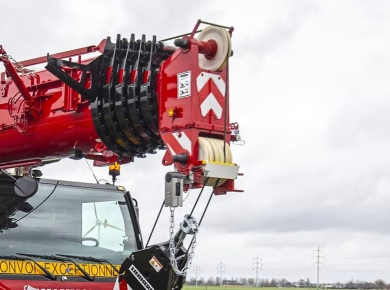Tree trimming is an essential aspect of maintaining the health and aesthetics of trees in Sacramento, a city known for its beautiful landscapes and abundant greenery. When done properly, trimming can enhance a tree’s growth, improve its structure, and even prevent potential hazards. However, many tree owners often wonder: how often should you trim your trees without risking their health? Let’s delve deeper into this topic, exploring the best practices for tree trimming in Sacramento and understanding the delicate balance between care and overzealous pruning.
The Importance of Tree Trimming
Tree trimming, or pruning, is more than just a cosmetic enhancement. It serves several critical functions. For one, regular trimming encourages healthy growth by allowing sunlight and air to reach the inner branches. This is particularly vital in Sacramento, where the Mediterranean climate can cause trees to grow rapidly. Additionally, trimming helps to remove dead or diseased branches, which can be a breeding ground for pests and diseases. And let’s not forget about safety—overgrown branches can pose risks to nearby structures, power lines, and even pedestrians.
How Often Should You Trim Your Trees?
When it comes to the frequency of tree trimming, several factors come into play. Generally speaking, the ideal schedule for tree trimming varies based on the type of tree, its age, and its specific growth patterns.
Consider the Tree Species
Different tree species have different growth rates and pruning needs. For instance, fast-growing species such as willows and poplars may require more frequent trimming—perhaps every year—while slower-growing trees like oaks and pines might only need trimming every few years. Knowing the specifics of your tree species is crucial.
Assess the Tree’s Age and Health
Young trees benefit from regular shaping to establish a strong structure. This early intervention can prevent problems later on. For young trees, trimming once a year can help encourage a healthy canopy. As trees mature, however, the focus may shift to removing dead or damaged branches rather than extensive shaping.
Additionally, if a tree is showing signs of distress—like yellowing leaves or stunted growth—it may be necessary to evaluate its health further. In such cases, consulting with an arborist can provide valuable insights and ensure that any trimming is done with the tree’s best interest in mind.
Seasonal Considerations for Tree Trimming
Timing is everything when it comes to tree trimming. Pruning at the wrong time of year can stress a tree and make it more susceptible to diseases or pests.
Best Seasons for Trimming
In Sacramento, the best time for tree trimming is typically late winter to early spring, just before new growth begins. During this dormant period, trees are less likely to suffer from stress, and it’s easier to see the structure of the tree without the distraction of leaves.
On the other hand, some trees may benefit from summer pruning as well. This can help control growth and improve air circulation. However, it’s essential to avoid heavy trimming during the fall, as this can expose trees to winter stress.
Signs That Your Tree Needs Trimming
Understanding when to trim your trees can be as important as knowing how often to do it. Here are some signs that indicate your tree may need some attention.
Overgrown Branches
If your tree’s branches are encroaching on power lines, buildings, or other trees, it’s time to consider trimming. Overgrown branches can become hazards during storms or high winds.
Dead or Diseased Branches
Any signs of dead wood—like brittle branches or a lack of leaves—are indicators that trimming is necessary. Additionally, if you notice any fungal growths or discoloration, these could be signs of disease that require immediate attention.
Techniques for Successful Tree Trimming
Proper techniques can make all the difference in how well a tree responds to trimming.
Understanding the Cuts
When trimming, it’s vital to make clean cuts at the right locations. Cuts should be made at the branch collar—the swollen area where a branch meets the trunk—allowing the tree to heal properly. Avoid leaving stubs, as these can become entry points for pests and diseases.
Utilizing Proper Tools
Using sharp and appropriate tools, such as pruning shears or saws, is crucial. Dull tools can damage the tree and make it more vulnerable. Always disinfect your tools before and after use to prevent the spread of disease.
Hiring a Professional Arborist
While DIY trimming can be satisfying, there are times when hiring a professional arborist is the best choice.
When to Call in the Experts
If you’re dealing with large trees, or if you’re unsure about the health of a tree, it’s wise to consult with a professional. They can assess the tree’s condition, recommend the best trimming practices, and carry out the work safely. Arborists are also trained to handle potential hazards, such as power lines or structural concerns.
Environmental Considerations in Sacramento
As a city rich in biodiversity, Sacramento is home to various tree species, each playing a role in the local ecosystem. Trimming practices should also take into account the local wildlife. For example, some birds nest in trees during spring, so it’s crucial to avoid trimming during nesting season.
Promoting Biodiversity
When maintaining your trees, consider how your actions affect local wildlife. Trimming should not only focus on aesthetics or safety but also on promoting a healthy environment for birds, insects, and other creatures that depend on trees for habitat.
Conclusion: The Art and Science of Tree Trimming
Tree trimming in Sacramento is a blend of art and science. Understanding when and how often to trim your trees is vital for promoting their health and longevity. By considering factors such as species, age, and seasonal timing, you can ensure that your trees thrive in the urban landscape. Whether you choose to tackle trimming on your own or hire a professional, the key is to approach the task with care and thoughtfulness.
Ultimately, well-trimmed trees not only enhance the beauty of your property but also contribute to the overall health of the local environment. So, take a moment to observe your trees, understand their needs, and give them the care they deserve. After all, a healthy tree is a happy tree, and that’s something we can all appreciate in our vibrant Sacramento community.


